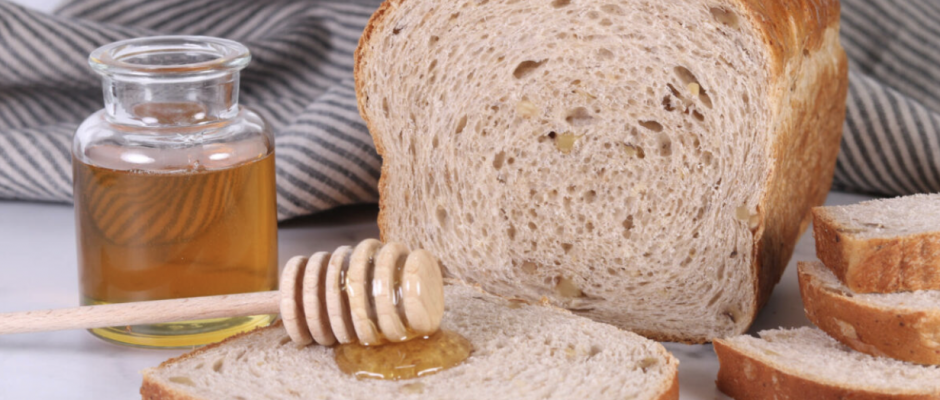November is a great time for pumpkin spice and everything nice, but it’s also the perfect time to celebrate National Bread Month. The wheat that U.S. farmers grow is exceptionally adept at creating tasty, homemade bread, so be sure to celebrate this homegrown holiday.
One bushel of wheat can produce 90 loaves of whole wheat bread. One acre of wheat can feed a family of three for more than 14 years! Or that same acre could feed 15,600 people for one day.
When you’re baking your own warm, toasty loaf made from U.S. wheat, remember that the USDA’s Dietary Guidelines for Americans stress the need to make half your grains whole every day, so be sure to add a little variety in the type of flour you use. A typical loaf of bread contains 16 ounces of flour, which could differ based on recipe and type of flour.
Both whole grain flour and enriched flour are important to maintaining a healthy diet, but what’s the difference between the two? A kernel of wheat contains three parts — the bran, the germ and the endosperm. The outer layer is called the bran, which contains fiber, B vitamins and other minerals. The germ is the plant’s embryo. The endosperm is the germ’s source of nutrition and contains protein and carbohydrates. Whole grain wheat flour contains all three parts of the kernel, while enriched flour only contains the endosperm.
As enriched flour is milled, some nutrients lost in the milling process are added back to the flour, along with additional nutrients like iron and folic acid. This fortified flour is the top source of folic acid in women of child-bearing age and has contributed to reducing neural tube defect rates by 36 percent.
Benefits of regular whole grain consumption include reduced risks of stroke, type 2 diabetes and heart disease. Whole grains are simple to incorporate into your diet. Try swapping out spaghetti, tortillas or loaves of bread for their whole grain alternatives, or be adventurous and try cooking with whole wheat berries.
Baking can be a great time to practice math as well as talk with children about nutrition. Have younger children help count ingredients. For example, ask children to count the number of cups as they dump them in. Talking about fractions while measuring can help older children visually understand how fractions work. The best memories are made from scratch, so be sure and use National Bread Month as the perfect reason to make some tasty, tasty memories.
Here’s A Little Wheat Trivia for you…
-Evidence indicates that wheat was baked to make bread in 6,700 B.C. by Swiss lake dwellers. That’s over 8,000 years ago!
-A bushel of wheat yields 73 loaves of bread.
-U.S. wheat farmers grow enough wheat to produce 146 billion loaves of bread annually. U.S. wheat farmers produce an average of more than 2 billion bushels of wheat per year.
In honor of one of our favorite foods, we thought we would share our 10 favorite facts about bread. After all, we wouldn’t have bread without wheat. That’s why National Bread Month means one more reason for us to be thankful. Read more about wheat facts, and find some delicious bread recipes at EatWheat.org!




Comments are closed.